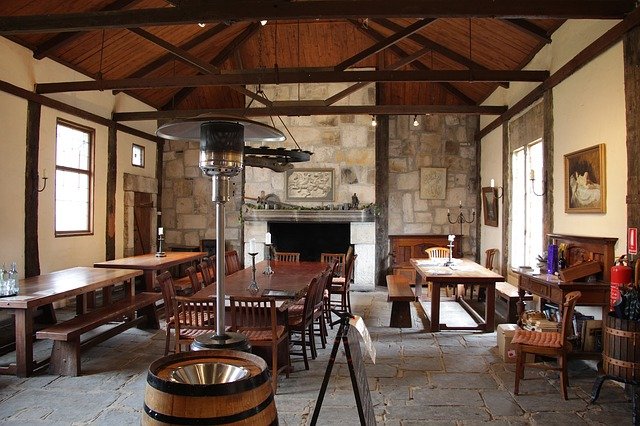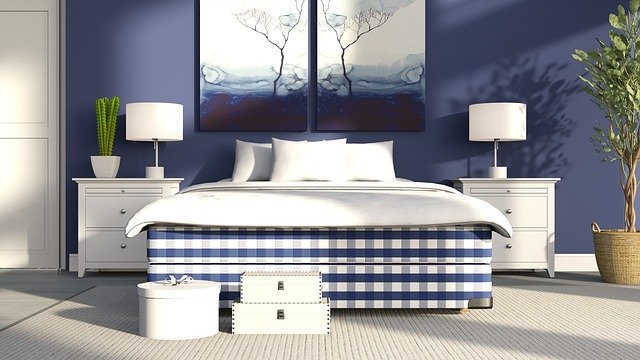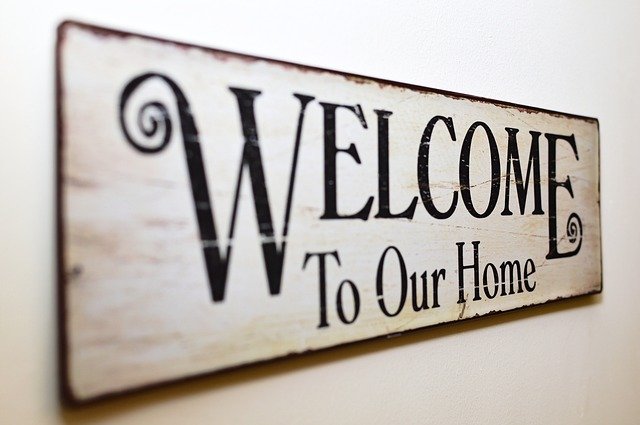How successfully you decorate your home all comes down to what you’re aiming for. If you want it to feel a little cozier, more traditionally warm and welcoming, then the rustic style is one that might just suit your tastes. Here, we’re going to look at a variety of ways that you can imbue your home with that rustic appeal to add some comfort and a feeling of simple indulgence that can be particularly potent when the weather starts to get colder.

Warm colors, warm feelings
Color is always going to play a big role in dictating the feel of a room, which will definitely play a role in how effectively you can get it to fit a theme or aesthetic. For the rustic aesthetic, you mostly want to stick to natural colors, but rather than going with things like cold stone colors or greens, you want to make sure that the colors feel rich and warm. Anything from a cream color down to burgundies can do great for creating that sense of snugness that is perfect for helping you relax. Check out some of the warm color schemes that you can emulate in your room. Make sure you choose a good base color and then accent around it.
Don’t be shy with the soft furnishings
The feeling of “comfort” in a home is about much more than just a visual style. It should speak to all of the senses as well. One of the best ways to do that is to appeal to the sense of touch. Especially in the winter, our hands and bodies crave softness and warmth, so you should make sure it’s all over your home. Adding soft furnishings can be simple, a few extra throws over your couches and some cushions to cuddle up to can do the job just perfectly. If you traditionally use blinds or other light window treatments, you might also want to add some softness to the windows with thick curtains. Aside from adding more of that comfy appeal, they are also better at closing out the outdoors at night to keep the home warmer.
Soften the floor with a good rug
One type of soft furnishing that is particularly effective for adding rustic appeal to a home is that of the area rug. Choosing the right rug for your home is going to depend on a range of things: the size of the floor space (minus the furniture), the floor type, the color palette you’re working with throughout the home, how much work you’re willing to put into maintaining and caring for that rug, and so on. However, the basic rule is that the largest bare space in each room can likely do with a rug. You might also tend to have it peek under furniture like the couch or bed so that you’re feet aren’t greeted by a cold wood or laminate floor when you move to stand.

Use fabric patterns outside of fabrics, too
The patterns that we find on traditional fabrics tend to have a comforting feeling, even when they are not necessarily used on fabrics but on other parts of the home decor. This can be most easily seen in your wallpaper, where fabric patterns like classic plaids can have a great impact in making the room seem much cozier. These patterns fade into the background well and complement soft furnishings, especially if you make an effort to color coordinate them. Of course, there are plaid wallpapers of a variety of colors, so you want to make sure that you choose one that matches the warm color palette that you’re likely to be going for, otherwise. The historic nature of plaid makes it feel more established, traditional, and familiar, which makes it comfortable as a result.
Accent lighting is key
Check the bulbs that you have in each of your lighting fixtures to make sure that you’re opting for a color temperature that’s good but not too bright. You typically don’t want to go much higher than a natural white. However, aside from your ceiling light fixture, you should consider choosing a lamp or two to place strategically in areas that are typically a little darker, such as corners or any parts of the room partly obscured by furniture or other decorative fixtures. You want to choose bulbs that are no brighter than a soft white for these lights, as you want to give the room a nice, soft glow, not a bright glare.
Natural materials will do a world of good
The word rustic tends to, for most people, conjure scenes of the countryside, or a more traditional existence, where we’re a little further away from everything synthetic and manmade. As such, utilizing natural materials more throughout your home can help to bring this feeling to life. Making good use of wood furniture and letting their wooden-ness show a little better is a good example of how to do this. Wood floors work wonders, too, but faux wood laminate is going to do the job just as well, aesthetically, especially if you choose those that are designed to mimic not just the look but also the feeling of wood, too.

Set a tone of welcoming
A rustic house should feel like a home to anyone who sets foot inside. It should beckon you in and give you a real welcome to make you feel instantly at ease. One of the easiest ways to make your home feel more inviting is to focus a little more on the front door and the entryway. A nice welcome mat, some exterior lighting, and a hallway lamp that offers a warm glow that reaches the outside can all give it that feeling.
With the tips above, you should be able to implement the rustic feel into any room. It’s all about the right mix of colors, patterns, and textures that all do their part to promote feelings of warmth and welcoming to anyone who steps foot inside them.
